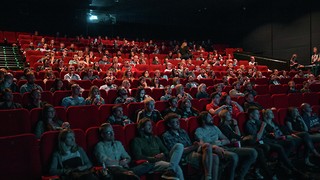Why Lance Armstrong’s ‘admission’ further discredits cycling
Toby Hayward-Butcher whole-heartedly confesses to his misjudgement of Lance Armstrong and the spectre of doping in sport…
A few months ago I wrote what, in hindsight, now looks like a very poorly researched and biased article for Varsity where I argued that, for the sake of perspective and given the inspirational narrative of the Lance Armstrong fairytale (and subsequent charitable endeavours), we should let bygones be bygones, and the charges against him for doping should be conveniently ignored. Without wishing to mitigate myself in the way that Armstrong has in his recent interview with Oprah, this is not entirely what I believed then. It is certainly not what I believe now, in the wake of everything that has happened in the last few months, but it made a provocative article at the time.
To recap, Lance Armstrong was found, in a long-awaited report by the United States Anti Doping Agency (USADA) not only to be guilty of doping throughout his long career (both before and after his cancer), but to have led “the most sophisticated, professionalised and successful doping programme that sport has ever seen”. Armstrong was not only a cheat, but he was a cheat on a scale never before seen and unlikely ever to be seen again. He was a vindictive bully who threatened, blackmailed and sued anyone who dared speak out against him. He effectively ruined the lives of many of those people, and his actions, although they took place at a time where doping was commonplace, have seriously undermined the credibility of his sport.

What makes my last article so embarrassingly wrong is that it was the very fact that Lance Armstrong appeared to be an inspirational figure of hope that allowed him to keep the UCI and the media in his pocket for so long. Convincing, as he did, the world that he was really just an innocent victim of a witch-hunt by non-believers who could not accept the “miracle” of his success after surviving testicular cancer in 1998. Of course there is probably more than one side to Armstrong. The Livestrong charity has been successful in raising millions of dollars for cancer research and treatment, and Armstrong has done numerous fundraising charity events over the years. But the sheer scale of hatred toward him cannot be ignored. According to the testimony of his masseuse, Emma O’Reilly, Armstrong bullied her, threatened her and undermined her credibility, all in an attempt to cover up his drug use. Armstrong recently admitted bullying O’Reilly and others in a television interview with Oprah Winfrey, but she has since rejected his apology.
This interview, which at the time of writing has only aired its first part, was a chance for Armstrong to issue a full unfettered disclosure of the extent not only of his doping, but of his vindictive and malicious tactics of denial and deceit. This was a chance for him to not only denounce himself but to blow the whistle on those who made it possible for him to dupe the authorities for so long. But what we actually got was a tempered confession followed by a series of strategic moves to shift the public’s perception of him. There were hundreds of people to whom he owed heartfelt apologies, but they received none. He was willing to describe himself as “a jerk”, a “bully” and an “arrogant prick”, but he delivered this apparently without emotion and attempted to mitigate his behaviour by making claims to the culture of the time, to which he was just another victim, forced over to the dark side in order to remain competitive. He denied being a mastermind, of running the doping ring and threatening teammates into doping. He also denied many of the allegations of bribery, blackmail and cover-ups which, if the testimony of his whistleblowers is to be trusted (and they were right about everything else) could mean that Armstrong will face criminal charges.

Armstrong at times even attempted to partially justify his behaviour. When asked why he went to such lengths and cheated on such a staggering scale, he put it down to his “ruthless desire to win” and claimed that he was “flawed”. From a strategic point of view, to claim that he is flawed is to couch his own admission within language that makes him appear vulnerable. If someone is flawed they are perceived to have a weakness, or a personality trait that is perhaps pathological. It is a way of shirking responsibility from his active agency and conscious, calculated decisions to behave in the way he did for so many years. In a piece of spin that is unlikely to convince many watching at home, Armstrong claimed that it was this same “flaw” that helped him to defy death when he was struck down with testicular cancer. Armstrong’s confession was largely contrived, and psychologist Patrick O’Donell has suggested that his body language, gestures and facial expressions are indicative of a man who is at odds with what he was saying. For much of the interview he wore a slightly smug expression, and a wry smile even appeared at the corner of his mouth from time to time. His confession lacked all the tell-tale nonverbal signs of contrition, and to many, especially those whose lives he made “hell”, his confession may well prove to be wholly unsatisfactory.
Without wishing to make bold predictions or judgments based on only scant evidence, and with the second part of the interview still to come, it seems to an onlooker that Lance Armstrong isn’t really sorry at all. I wouldn’t be surprised if I was more embarrassed about writing my previous article about him than he is about his conduct over more than a decade. So I gladly revoke everything I wrote about Lance Armstrong before. It is in the interest of the sport, in the interest of those he bullied and harassed, and even in the interest of those he inspired that the full extent of Armstrong’s behaviour be exposed. It’s just sad that a truly heartfelt admission of guilt and sorrow is unlikely to accompany this.
The Tour de France has recently announced that it will be coming through Cambridge in 2014.
 News / Tompkins Table 2025: Trinity widens gap on Christ’s19 August 2025
News / Tompkins Table 2025: Trinity widens gap on Christ’s19 August 2025 Comment / A plague on your new-build houses18 August 2025
Comment / A plague on your new-build houses18 August 2025 News / Trinity sells O2 Arena lease for £90m12 August 2025
News / Trinity sells O2 Arena lease for £90m12 August 2025 News / Pro-Palestine activists spray-paint Barclays Eagle Labs18 August 2025
News / Pro-Palestine activists spray-paint Barclays Eagle Labs18 August 2025 News / Uni welcomes new students14 August 2025
News / Uni welcomes new students14 August 2025









